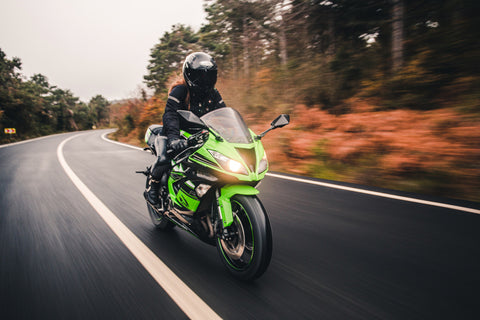Hitting the open road on your motorcycle is a thrill, but with that freedom comes responsibility. Knowing and following motorcycle laws is crucial for your safety and the safety of others.
However, if you’ve become a victim of an accident, you might need a motorcycle accident lawyer to help you fight the legal maze that comes afterward.
In this article, we’ll be outlining the motorcycle laws every rider should know about, regardless of their region.
Licensing and Registration
Just like driving a car, operating a motorcycle requires a valid license with a motorcycle endorsement. This ensures you have the knowledge and skills to handle this unique type of vehicle safely.
The process typically involves passing a written knowledge test that covers motorcycle-specific rules of the road, safe riding practices, and traffic laws. You'll also need to demonstrate your riding skills on a practical skills test.

Once you've got your license with the motorcycle endorsement, you can't just hop on and go. Your motorcycle needs to be registered with the state of Minnesota.
Registration verifies ownership, ensures you have the minimum required insurance coverage, and allows you to operate the motorcycle legally.
The registration process involves paying fees, providing proof of ownership (like the title), and demonstrating insurance coverage.
Safety Gear
Now, about safety gear. It isn't about looking cool (although it can definitely do that too). It's about protecting yourself in case of an accident. Invest in good-quality gear that fits properly, and wear it every single time you ride, no matter how short the trip.
Here are some of the essential gears every rider must carry:
- Helmet
- Eye protection
- Gloves
- Jackets
- Pants
- Sturdy footwear (preferably boots)
Vehicle Requirements
Your motorcycle needs to meet specific equipment standards to ensure it's safe and roadworthy. LA riders are told by their Los Angeles traffic attorney how unsafe it is to operate a motorcycle that doesn't meet the following requirements. Moreover, not having these items can get you in trouble with the law.
Here's a breakdown of some key requirements:

Headlights: Motorcycles must have at least one, but not more than four headlights, with both high and low beam functionality.
Taillights: A red or yellow taillight and stop lamp are mandatory.
Brakes: At least one brake (either front or rear) is required, and it can be hand or foot-operated. Both brakes should be in good working condition.
Mirrors: A rearview mirror is essential for seeing traffic behind you. Some motorcycles may also have additional mirrors for better visibility.
Turn signals: Turn signals are required on most motorcycles manufactured after a certain year (check with the Minnesota Department of Public Safety for specifics). They allow you to communicate your turning intentions to other drivers.
Horn: A working horn is crucial for alerting other drivers of your presence, especially in situations with limited visibility.
Tires: Make sure your tires are properly inflated and have sufficient tread depth to maintain a good grip on the road.
Traffic Laws
Minnesota roadways are shared by all types of vehicles, and understanding the traffic laws specific to motorcycles is crucial for safe and legal riding. Here are some key laws to remember:
- Speed limits: Just like any other motor vehicle, motorcycles must adhere to posted speed limits.
- Right of way: Motorcycles have the same rights and responsibilities as other vehicles on the road. Treat intersections and traffic signals with respect and yield the right of way when necessary.
- Sharing the lane: Motorcycles are entitled to the full use of their lane and shouldn't be forced to share the lane with another vehicle.
- Yielding to large vehicles: Be extra cautious when riding near large trucks and buses. These vehicles have large blind spots, so make sure you're clearly visible before maneuvering around them.
- Filtering to the front at a stoplight: While not illegal in Minnesota, filtering (carefully moving your motorcycle between lanes of stopped traffic to reach the front of the line) should be done with extreme caution and only when traffic is completely stopped.
Wrapping Up
These are just some of the key laws. Always consult the Department of Public Safety (DPS) Driver and Vehicle Services (DVS) for the most current and comprehensive motorcycle laws specific to your region.
ABOUT THE AUTHOR
Fred Felton
Content Creator / Editor
Fred Felton is a copywriter, editor and social media specialist based in Durban, South Africa. He has over 20 years of experience in creating high end content. He has worked with some of the biggest brands in the world. Currently Fred specialises in the motorbiking adventure space, focussing on all types of biking both on and offroad. He is also a keynote speaker and has presented talks and workshops in South Africa.






